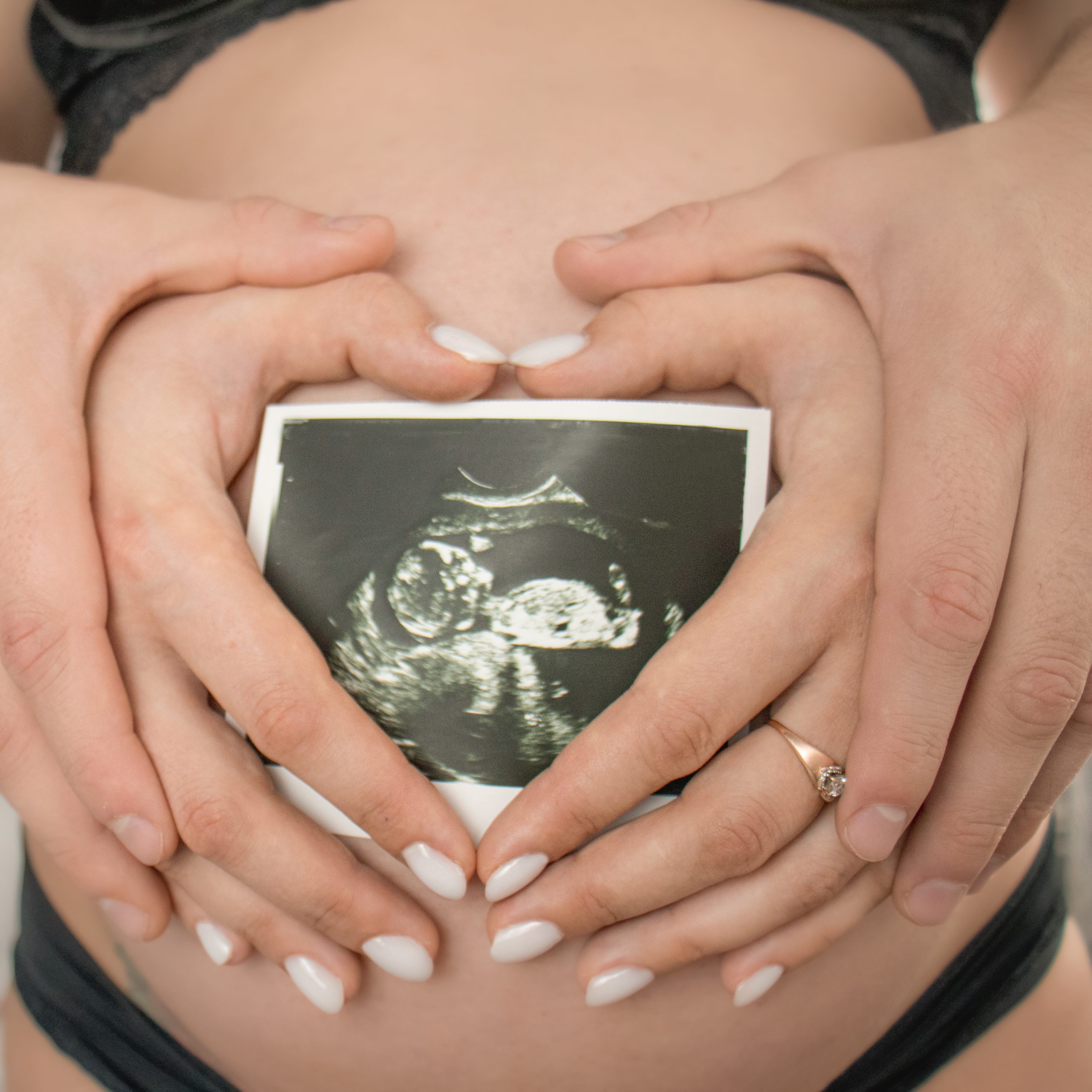Improving maternal vaccination rates saves lives.
The third trimester. She counts down the days until her little one arrives. At her 32-week prenatal appointment, the Obgyn throws her a curveball. The doctor recommends the Tdap vaccine and a flu shot. Pregnancy places her at high risk, and the vaccines will pass protective immunity to her baby. But her family and Facebook Mom’s group adamantly oppose vaccination.
What should she do?
Every year, Influenza and Pertussis (Whooping cough) cause significant harm to pregnant women and their babies. The CDC recommends all pregnant women receive an annual flu shot and a pertussis vaccine (Tdap) during each pregnancy. Vaccinating pregnant women with the influenza vaccine and Tdap protects moms and their babies.
Both influenza and Tdap vaccines reduce the risk to pregnant women protect babies who are too young to get vaccinated. These vaccines transfer antibodies through the placenta from the mom to baby proving protection until they are old enough to receive their own vaccinations.
The CDC analyzed eight years of surveillance data (2010–2018) to determine influenza and pertussis’s impact on pregnant women and their babies. The MMWR Burden and Prevention of Influenza and Pertussis Among Pregnant Women and Infants evaluated 2097 pregnant women and infants in an internet survey published in October 2019.
The survey outlines the significant danger of influenza and pertussis and tracks the vaccination rates of both vaccine-preventable diseases. Only half of the pregnant women receive one of the vaccines, and only one-third of pregnant women receive both vaccines.
Improving these vaccination rates saves lives.
Impact of season flu on pregnant women
Influenza is a common seasonal respiratory viral infection. The virus spreads via respiratory droplets from person-to-person. Droplets spread through coughing, sneezing, and breathing. Particles get on our clothes and hands. We then pass the virus through handshakes, hugging, kissing, and other close human contacts.
Pregnant women are not at an increased risk of catching the flu, but physiological changes of pregnancy place women at an increased risk of serious, adverse complications.
Pregnant women have a suppressed immune system and changes in their lung function. These changes put pregnant women at a higher risk of respiratory problems when they contract viruses. For this reason, pregnant women are considered an at-risk group for respiratory compromise if they contract influenza. Women who catch the flu are 2.4 times more likely to end up requiring hospitalization.
The Advisory Committee on Immunization Practices (ACIP) recommends all pregnant women receive an annual flu shot regardless of gestational age. Influenza vaccination is critically important to preventing infection. The best prevention is the flu shot. If you have not received your annual flu vaccine, you should do so now.
The CDC states that flu shots reduce the risk of influenza-associated hospitalization by an average of 40%.
The MMWR data from 2010–1018 show pregnant women accounted for approximately one-third of all influenza-associated hospitalizations.
Key highlights from the MMWR report showed:
- 2,341 pregnant women were hospitalized for influenza.
- Pregnant women account for one-third of reported influenza-associated hospitalizations each year.
- Only 53.7% of pregnant women received a flu shot.
- Influenza vaccination rates improved to 65.7% when the patients’ healthcare provider offered the office vaccine.
Impact of seasonal flu on infants
Influenza is also dangerous for babies. The MMWR data demonstrated infants less than six months old who have influenza are hospitalized more often and have the highest risk of death. One hundred infants under the age of six months died from a laboratory-confirmed influenza-associated illness.
While the majority of influenza-infected children recover after about seven days, some children suffer serious adverse effects. Complications such as pneumonia and sepsis can be life-threatening. Influenza can also invade the tissues of the heart, causing a dangerous condition called myocarditis. Neurologic complications from influenza range from febrile seizures to viral infections of the brain called encephalopathy.
The best way to protect infants from the flu is to vaccinate the adults who will be around the baby and for mom to get vaccinated during pregnancy. Giving pregnant women a flu shot reduces the risk of infant influenza-associated hospitalization by an average of 72%.
The crossover antibodies help protect the infant until they are old enough to get their own flu vaccine. Children qualify for seasonal flu shots after six months of age.

Pertussis
Pertussis, also known as whooping cough, is a highly contagious respiratory infection caused by Bordetella pertussis bacteria. All of us can get sick from pertussis, but babies who are too young to get vaccinated are most at risk.
Newborns are at high risk of getting sick from Pertussis (whooping cough). Children less than 1-year-old have the highest chance of Pertussis cases and account for 88% of pertussis deaths. The CDC recommends all pregnant women receive a pertussis vaccine during each pregnancy.
Vaccinating pregnant women with Tdap protects moms and their babies. An NIH study reports that third-trimester maternal Tdap vaccination is “77.7% effective in preventing pertussis cases and 90.5% effective in preventing pertussis hospitalizations in infants less than two months old.”
The Advisory Committee on Immunization Practices recommends all pregnant women receive the Tdap vaccine between 27–36 weeks to provide immunity to the baby through the placenta. Children do not receive their first dose of pertussis vaccine until age two.
Key highlights from the MMWR report showed:
- 27,370 infants aged <12 months developed pertussis.
- 69% of pertussis deaths occurred in infants less than two months old.
- 3,928 pertussis-related hospitalizations were in infants less than two months old.
- One third (9,199 cases) occurred among infants aged <2 months.
- 7,731 infants were hospitalized for pertussis.
- 3,928 (50.8%) were among infants aged <2 months
- Only 54.9% of women received a Tdap vaccine during pregnancy.
- Tdap vaccination rates for Tdap improved to 70.5 % when a healthcare provider offered the vaccines in the office.
Why don’t people get the flu and Tdap vaccines?
This report showed that only half of pregnant women received an influenza or Tdap vaccine. Despite the CDC recommendations to protect themselves and their infants, only 34.8% of women received both vaccinations.
The most common reasons for non-vaccination cited in this report were:
- Believing the vaccine is not effective (influenza; 17.6%)
- Not knowing that vaccination is needed during each pregnancy (Tdap; 37.9%)
- Safety concerns for the infant (influenza =15.9%; Tdap = 17.1%).
Lower rates of vaccination were seen in:
- Non-Hispanic Black women
- Women who had less than a college education
- Unmarried women
- Women who lived below the poverty line
- Women living in the South
- Women with public insurance or without health insurance
- Women who did not receive a vaccine offer from their health provider in the office
- Influenza vaccination coverage was lower among nonworking women
- Tdap coverage was lower among working women.
Why do Tdap and Flu vaccines matter?
The MMWR Burden and Prevention of Influenza and Pertussis Among Pregnant Women and Infants report uses eight years of surveillance data to illustrate the impact on influenza and pertussis.
Approximately 9% of US females age 15–44 are pregnant at any given time each year, but only about half of these women receive the flu or Tdap vaccine and only one-third receive both.
The low vaccination rates in pregnancy lead to disturbing statistics.
Improving our maternal vaccination rates can prevent hospitalizations and save lives.
Thank you to BeingWell for publishing this article on Medium. Article originally published on Medika Life.
Thanks to Robert Turner.
Blog Author: Dr. Jeff Livingston
Main Blog Photo By: yaoinlove Istock by Getty











